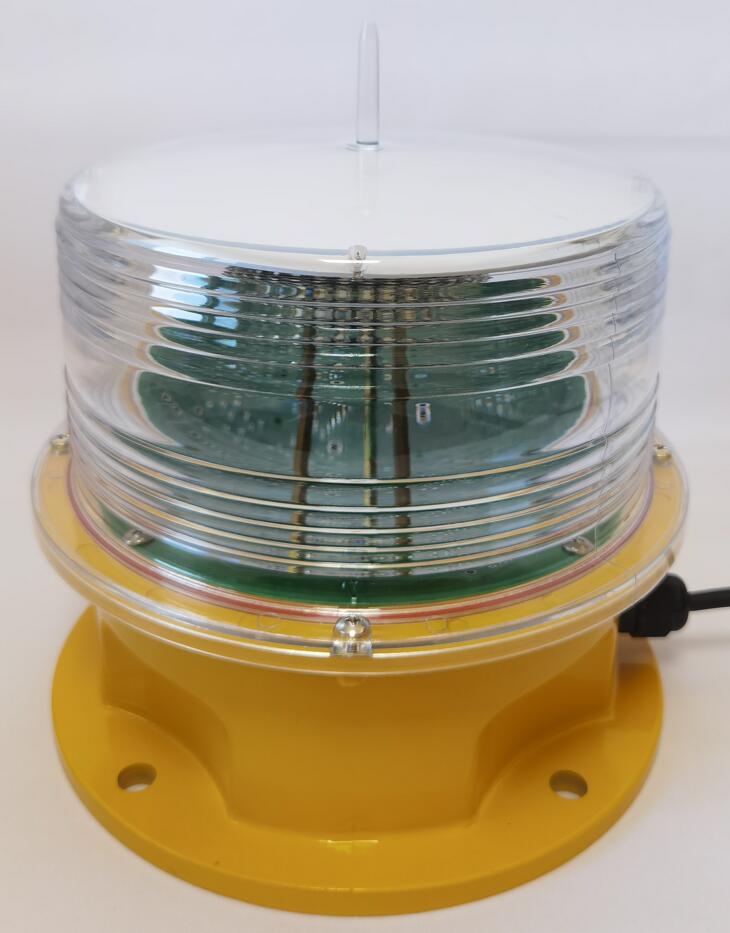A helipad beacon light is a critical component in aviation safety, ensuring that pilots can locate landing zones in various weather and lighting conditions. Whether for hospitals, offshore platforms, or high-rise buildings, a reliable beacon light enhances operational efficiency and minimizes risks. With technological advancements, modern helipad beacon lights offer improved durability, energy efficiency, and compliance with international aviation standards.
Importance of a Helipad Beacon Light
1. Improved Nighttime and Low-Visibility Navigation
A helipad beacon light serves as a guiding signal for pilots, helping them identify landing areas in darkness, fog, or adverse weather. High-intensity flashing lights provide clear, long-range visibility, reducing the chances of missed approaches or misaligned landings.

2. Compliance with Aviation Regulations
Helipad lighting systems, including beacon lights, must adhere to regulations set by the International Civil Aviation Organization (ICAO) and the Federal Aviation Administration (FAA). These guidelines specify light intensity, flash rates, and color requirements to ensure safe operations.
3. Increased Safety for Helicopter Operations
In emergency situations, a well-placed helipad beacon light can be the difference between a smooth landing and a hazardous approach. It helps pilots distinguish between active and inactive landing sites, preventing potential accidents in busy airspaces.
| Helipad Beacon Light |
| Helipad Beacon Lights |
Key Features of a High-Quality Helipad Beacon Light
1. High-Intensity LED Technology
Modern helipad beacon lights utilize LED technology for enhanced brightness, low power consumption, and extended lifespan. LEDs also offer better visibility in adverse weather compared to traditional incandescent or halogen lights.
2. Durable and Weather-Resistant Design
Since helipad beacon lights are exposed to extreme conditions, they must be built with durable, corrosion-resistant materials. A waterproof and dustproof design (IP65 or higher) ensures optimal performance in rain, snow, and high winds.
3. Adjustable Flash Patterns and Intensity
Customizable flash rates and brightness levels allow operators to optimize beacon performance based on location-specific requirements. This adaptability ensures compliance with both civil and military aviation needs.
4. Energy Efficiency and Solar-Powered Options
With the growing emphasis on sustainability, many helipad beacon lights are now available in solar-powered models. These units reduce operational costs and ensure continuous functionality even in remote areas without a power grid.
Types of Helipad Beacon Lights
1. Rotating Beacon Lights
These lights emit a continuous rotating signal, making them highly effective for long-distance visibility. They are commonly used in high-traffic helipads and airports.
2. Flashing Beacon Lights
Flashing beacons emit periodic bursts of light, ensuring high visibility without excessive energy consumption. These lights are often used in emergency medical service (EMS) helipads.
3. Infrared (IR) Beacon Lights
Designed for military and night vision operations, IR beacon lights provide discrete lighting visible only through specialized equipment, ensuring secure and undetected landings.
Choosing the Right Helipad Beacon Light
1. Assessing Environmental Conditions
Select a beacon light that can withstand local weather conditions, such as extreme temperatures, heavy rain, or high humidity. A robust housing with UV-resistant coatings will extend its lifespan.
2. Compliance with Standards
Ensure that the chosen beacon light meets FAA, ICAO, and local aviation authority regulations. Non-compliant lighting can lead to safety hazards and operational delays.
3. Power Supply Considerations
Evaluate whether a wired or solar-powered beacon light is more suitable for your installation. Solar-powered options are ideal for remote locations, while wired lights provide a stable power source in high-demand environments.
4. Ease of Maintenance and Installation
Opt for beacon lights with minimal maintenance requirements and straightforward installation processes. Modular designs with replaceable components help reduce downtime and operational costs.
Future Trends in Helipad Beacon Light Technology
1. Smart Beacon Systems
Upcoming helipad beacon lights will incorporate IoT-based monitoring systems, allowing remote control and automated adjustments based on real-time weather and traffic conditions.
2. Wireless and Bluetooth-Controlled Lighting
Wireless communication technology will enable operators to control beacon lights remotely, adjusting brightness and flash patterns as needed without manual intervention.
3. Integration with Navigation Systems
Future beacon lights will be integrated with advanced GPS and aviation navigation systems, providing pilots with precise location guidance, reducing landing errors, and improving operational safety.
A high-quality helipad beacon light is a vital investment for ensuring safe and efficient helicopter landings. With advancements in LED technology, energy efficiency, and automation, these lights continue to evolve to meet the growing demands of modern aviation. Whether for commercial, emergency, or military use, selecting the right beacon light enhances visibility, regulatory compliance, and overall flight safety. As the industry progresses, innovations in helipad lighting will further improve the reliability and performance of aviation infrastructure worldwide.